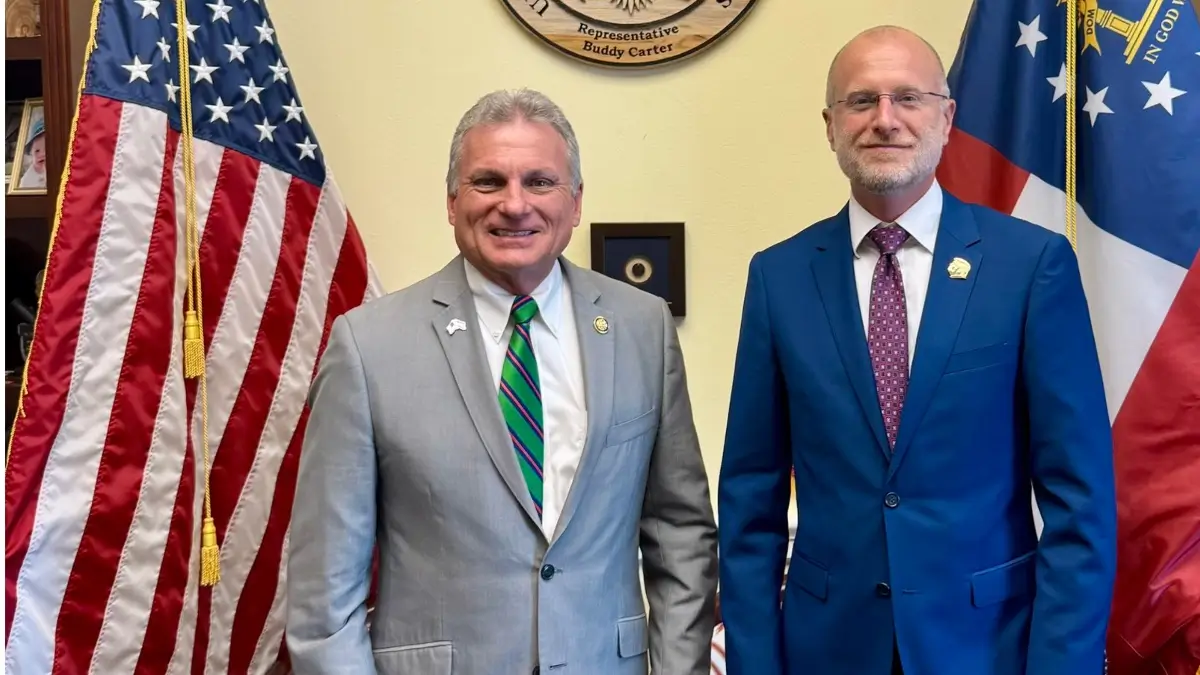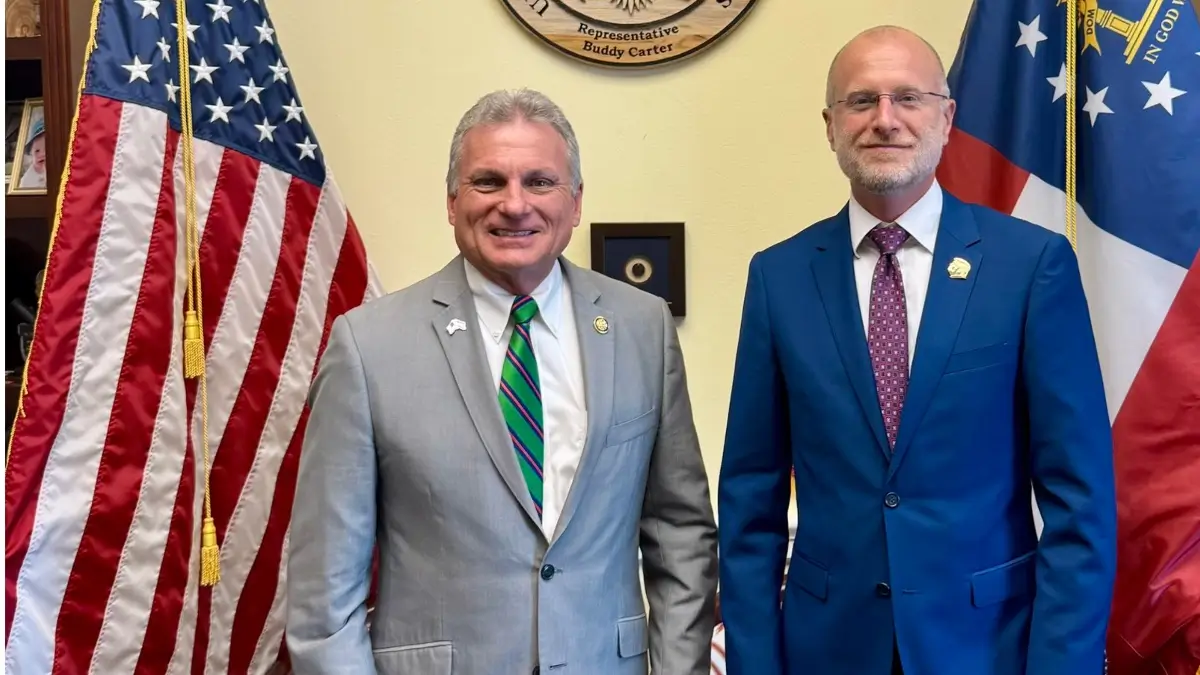‘How Is This Not a Cult?’: Donald Trump Worship Reaches Lapel Level After Trump’s Face Replaces the American Flag on FCC Chairman’s Suit Jacket
There are golden lapel pins, and then there are loyalty pledges masquerading as innocent golden lapel pins.
FCC chairman Brendan Carr recently chose the latter — slapping a golden pin of Donald Trump’s head on his suit jacket like he was auditioning to lead the Ministry of MAGA Propaganda (and let’s not give Trump any ideas).
Carr posed for the camera in the halls of Congress, right beneath the official House seal, proudly showing off the pin where most policymakers typically display the American flag — a silent swap that put symbolism over substance while highlighting the shameless fealty shown to Trump, especially by appointees and members of his Cabinet.

And for those wondering if the golden image of Trump was just a one-time flex by Carr, rest assured, it was everything but: He’s posted the Trump-head pin multiple times on X, apparently convinced that replacing the national emblem with the face of his favorite president was just good branding.
Social media had a field day.
“Once again, how is this not a cult?” one person quipped on Reddit.
“Some real pick me energy with your big shiny Trump pin,” one user jabbed in another post, showing Carr beaming with the pin on full display.
Another person offered Carr some wardrobe advice: “Disgusting idiot, you have no integrity, why not pin that damn badge on your forehead.”
One user summed up the backlash in a scathing post: “How insane is it to wear a Trump pin like you’re his fan club president? Are you 12? Are you ethically challenged?”
The controversy and its backlash had the unsettling echo of oppressive regimes where face pins are less of a fashion choice and more of a survival tactic. North Korea, for instance, has made miniature portraits of Kim Il-sung and Kim Jong-un practically mandatory. Mao Zedong had his own lapel cult during China’s Cultural Revolution.
The resemblance wasn’t lost on critics, who saw this kind of hero-worship creeping dangerously close to authoritarian cosplay in American politics unlike ever before.
The White House tried to brush it off.
“Obviously, we did not order officials to wear this pin. If they choose to wear one, it is to show support for the greatest President in history,” an unnamed official told Yahoo News.
It was the kind of statement that accidentally confirmed the entire point.
Carr has not commented on the backlash, but Trump’s golden head had already spoken for itself. At a time when loyalty to Trump was under heavy criticism in Democratic circles, the pin felt less like a personal statement and more like a snapshot of the current climate in Washington — with Republicans showing no resistance to Trump’s agenda, and symbolism playing a direct role in staying in Trump’s good graces.
And Carr wasn’t the only one making headlines with his devotion. In February, New York Rep. Claudia Tenney decided it was high time America made Trump’s birthday a federal holiday. Yes, you read that right. In a bill that practically came gift-wrapped in MAGA red, Tenney proposed combining June 14 — already Flag Day — with a new holiday named “Trump’s Birthday and Flag Day.” Her pitch? That Trump, like George Washington, deserves his own day on the calendar.
“As both our 45th and 47th President, he is the most consequential President in modern American history,” Tenney declared, brushing past Trump’s felony conviction, a civil finding of sexual abuse, and two impeachments like they were parking tickets.
She even anointed Trump “the founder of America’s Golden Age,” a phrase that seemed less like a legislative bluster and more like the start of a Marvel comics origin story.
The move sparked its own wave of criticism online, with commenters likening the proposal to something out of North Korea’s playbook. “We keep saying it’s a cult,” one user posted, “and they keep proving us right.”
Taken together, Tenney’s bill and Carr’s pin offer more than just isolated quirks — they show a party increasingly shaped by one man’s image, both literally and legislatively.

